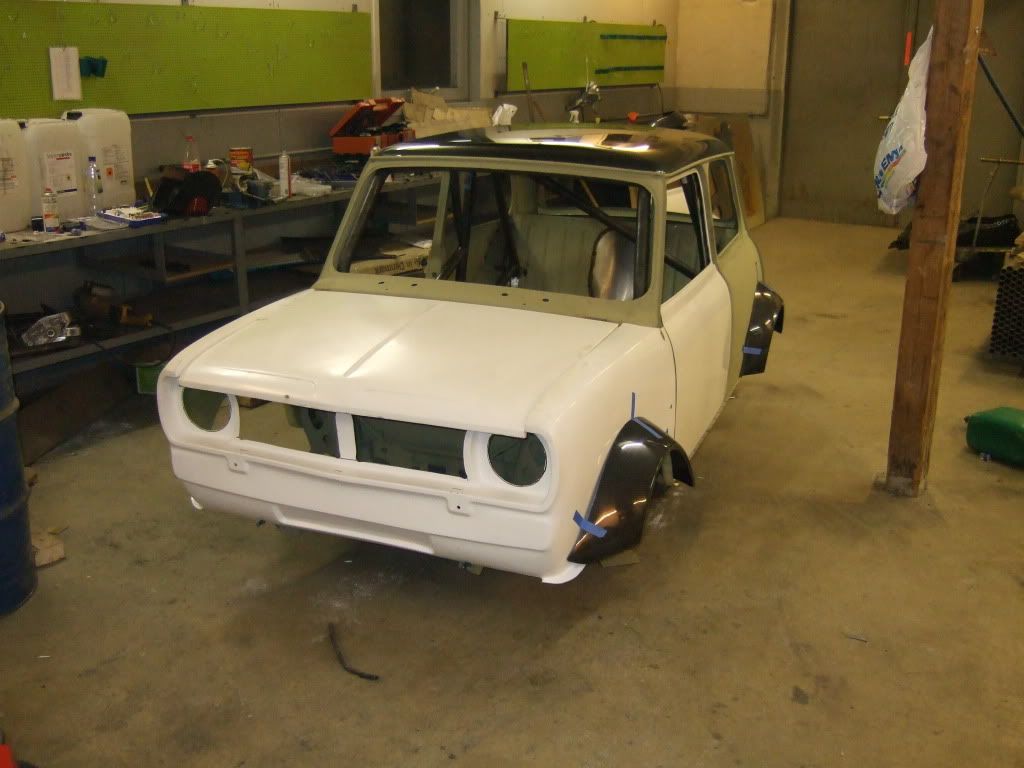| Page: |
| Home > MS Trials & Testing > Dual Wideband Datalog | |||||||
|
520 Posts Member #: 2093 Post Whore Grenoble, France |
6th Dec, 2007 at 09:18:37pm
About ignition amplifiers: I found Bosch dual ignition amplifiers very fragile. I burned out two of them while debugging my ignition code. Now I'm using 2 single channel amplifiers.
Edited by alpa on 7th Dec, 2007. std 998 A+, g295, MD266, RHF4, 109hp @0.8bar/5400rpm |
||||||
|
141 Posts Member #: 954 Advanced Member Fort Collins Colorado USA |
6th Dec, 2007 at 11:47:02pm
If this data holds up after the instruments are sorted, it is very interesting.
1275 with Back Door Turbo |
||||||
 11046 Posts Member #: 965 Post Whore Preston On The Brook |
7th Dec, 2007 at 12:55:47am
Is the inlet manifold heated? On 26th Oct, 2004 TurboDave16v said:
Is it A-Series only? I think it should be... So when some joey comes on here about how his 16v turbo vauxhall is great compared to ours, he can be given the 'bird'... On 26th Oct, 2004 Tom Fenton said:
Yep I agree with TD........ |
||||||
|
8604 Posts Member #: 573 Formerly Axel Podland |
7th Dec, 2007 at 12:38:45pm
Took another couple of logs this morning.
Saul Bellow - "A great deal of intelligence can be invested in ignorance when the need for illusion is deep."
|
||||||
 6749 Posts Member #: 828 Post Whore uranus |
7th Dec, 2007 at 01:33:14pm
well done paUL .
Edited by robert on 7th Dec, 2007. Medusa + injection = too much torque for the dyno ..https://youtu.be/qg5o0_tJxYM |
||||||
|
715 Posts Member #: 1381 Post Whore Doncaster, South Yorkshire |
7th Dec, 2007 at 02:01:25pm
Paul, Can you tell me where you fitted both wb sensors in the ex manifold and also what plugs and leads you have fitted.
|
||||||
|
8604 Posts Member #: 573 Formerly Axel Podland |
7th Dec, 2007 at 03:21:34pm
On 7th of Dec, 2007 at 02:01pm danboy said:
Paul, Can you tell me where you fitted both wb sensors in the ex manifold and also what plugs and leads you have fitted. Regards Dave Dave, This is the location of the sensors, although they are narrowband sensors in the picture. 
I'm using Champion RN9YCC plugs with standard Bosch EDIS leads. Saul Bellow - "A great deal of intelligence can be invested in ignorance when the need for illusion is deep."
|
||||||
|
8604 Posts Member #: 573 Formerly Axel Podland |
7th Dec, 2007 at 03:37:25pm
After an hour or so of skinning my knuckles, breaking my back transfering the sensors, nothing appears to have significantly changed.
Saul Bellow - "A great deal of intelligence can be invested in ignorance when the need for illusion is deep."
|
||||||
|
Forum Mod 10980 Posts Member #: 17 ***16*** SouthPark, Colorado |
7th Dec, 2007 at 03:48:22pm
On 7th of Dec, 2007 at 03:37pm Paul S said:
After an hour or so of skinning my knuckles, breaking my back transfering the sensors, nothing appears to have significantly changed. Well, that is good at least On 7th of Dec, 2007 at 03:37pm Paul S said:
There is one obvious reason why the outer cylinders are running lean, that I have not checked. Can anyone guess what it is? Clue is in the picture above. You've got me... I can't see what could be wrong? On 17th Nov, 2014 Tom Fenton said:
Sorry to say My Herpes are no better Ready to feel Ancient ??? This is 26 years old as of 2022 https://youtu.be/YQQokcoOzeY |
||||||
 1849 Posts Member #: 672 The oversills police Oslo, Norway |
7th Dec, 2007 at 03:55:10pm
exhaust leak? |
||||||
|
8604 Posts Member #: 573 Formerly Axel Podland |
7th Dec, 2007 at 04:07:06pm
On 7th of Dec, 2007 at 03:55pm miniminor63 said:
exhaust leak? First prize to miniminor63. I had a job sealing up the exhaust joints at the weekend. With the slightest leak it read 20:1 at idle. The is no audible leak now, but it is a possibility that at low revs/load, the inlet vacuum is pulling air in on valve overlap. However, if that was causing the apparent lean outer cylinders, I would not expect it to do so at 3000-4500 rpm on full throttle. Saul Bellow - "A great deal of intelligence can be invested in ignorance when the need for illusion is deep."
|
||||||
|
141 Posts Member #: 954 Advanced Member Fort Collins Colorado USA |
7th Dec, 2007 at 06:09:37pm
This is terrific work.
1275 with Back Door Turbo |
||||||
|
715 Posts Member #: 1381 Post Whore Doncaster, South Yorkshire |
7th Dec, 2007 at 06:23:43pm
On 7th of Dec, 2007 at 03:21pm Paul S said:
On 7th of Dec, 2007 at 02:01pm danboy said:
Paul, Can you tell me where you fitted both wb sensors in the ex manifold and also what plugs and leads you have fitted. Regards Dave Dave, This is the location of the sensors, although they are narrowband sensors in the picture. 
I'm using Champion RN9YCC plugs with standard Bosch EDIS leads. Paul, the reason i asked, regarding the position of the sensors, was that I thought you might have positioned the centre (cyl 2&3) a little lower down the exhaust to try to negate the extra heat from 2 cylinders into one pipe. I see you are using resistor plugs so that is not the reason for the spikey rpm trace. regards Dave |
||||||
|
8604 Posts Member #: 573 Formerly Axel Podland |
7th Dec, 2007 at 06:29:37pm
On 7th of Dec, 2007 at 06:09pm fortfun said:
This is terrific work. What about the manifold heat question Sprocket asked? I've got mine wrapped up with heat blanket around the exhaust and the intake manifolds, largely because the downdraft Weber inlet manifold features an uphill climb from the plenum bottom to the inlet ports on the head. If the evaporation off inlet manifold walls speeds up, maybe this goes away. I seem to recall something in Vizard's book about the stock manifold exhaust head being too much but water heating the manifold improving performance versus no heat. Maybe imagining it, will have to look tonight. The inlet manifold is unheated. To test the heat theory out, we drove a lot further in the second run today. A total of about 20 miles. If anything, the readings got further apart, not closer. EDIT: Extract from data showing the last bit of full throttle after 21 minutes attached. A quick burst through second and third. Edited by Paul S on 7th Dec, 2007. Saul Bellow - "A great deal of intelligence can be invested in ignorance when the need for illusion is deep."
|
||||||
 11046 Posts Member #: 965 Post Whore Preston On The Brook |
7th Dec, 2007 at 06:52:32pm
What sort of wideband sensors are those? they look mega different to the ones I have.
On 26th Oct, 2004 TurboDave16v said:
Is it A-Series only? I think it should be... So when some joey comes on here about how his 16v turbo vauxhall is great compared to ours, he can be given the 'bird'... On 26th Oct, 2004 Tom Fenton said:
Yep I agree with TD........ |
||||||
|
520 Posts Member #: 2093 Post Whore Grenoble, France |
10th Dec, 2007 at 11:28:06am
Paul,
std 998 A+, g295, MD266, RHF4, 109hp @0.8bar/5400rpm |
||||||
|
8604 Posts Member #: 573 Formerly Axel Podland |
10th Dec, 2007 at 11:55:17am
On 10th of Dec, 2007 at 11:28am alpa said:
Paul, The fuel evaporation rate increases with lower pressures. Could you try to log stable and transient RPM modes with partially closed throttle, say at 60kPa ? I'm not sure it would allow a better understanding as evaporation rate is very slow, but may be we would see something interesting. Thanks for your work. EDIT: I was talking crap, there was some other data in the spreadsheet from the previous log. The attached log shows some cruising and transient modes. Edited by Paul S on 10th Dec, 2007. Saul Bellow - "A great deal of intelligence can be invested in ignorance when the need for illusion is deep."
|
||||||
|
Site Admin  15300 Posts Member #: 337 Fearless Tom Fenton, Avon Park 2007 & 2008 class D winner & TM legend. |
10th Dec, 2007 at 12:01:04pm
Perhaps a rubbish idea, but surely one way to prove the instrumentation would be to fit a second boss to one of the downpipes, and then log a decent length run with both sensors in the same downpipe. Obvioulsy if there is any drift occuring over time or due to temperature this would then show up as differing readings between sensors?
On 29th Nov, 2016 madmk1 said:
On 28th Nov, 2016 Rob Gavin said:
I refuse to pay for anything else Like fuel 😂😂 |
||||||
| Home > MS Trials & Testing > Dual Wideband Datalog | |||||||
|
|||||||
| Page: |

